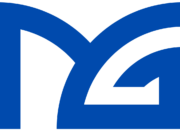
Scheduling of patients
Revenue Cycle Management services begin with a “patient encounter” that, in ideal circumstances, the patient schedules in advance. Hospital Emergency Departments and Urgent Care Centers may be exceptions.


Eligibility and Benefits Verification
When scheduling, the patient’s insurance information is captured so the provider may verify benefits and determine insurance coverage. If necessary, a financial planning engagement can be arranged in advance of medical services rendered, and appropriate patient contributions can be collected during service.
The step before Authorization
During the Benefit and Eligibility verification, the patient’s insurance carrier may inform the provider that they need to submit a pre-authorization to provide and be reimbursed for services to the patient. The Authorization consists of submitting a request with accompanying Medical Records for the Insurance company to guarantee reimbursement for several visits for the patient.


The Patient’s Interaction
In the patient encounter, providers and patients meet to discuss the patient’s medical issues, devise treatment plans, and provide therapy. This interaction is recorded in the patient’s records either electronically in an EHR or on paper. When the patient arrives, the encounter officially begins. The provider’s administrative team then performs a patient intake. Confirming demographics, insurance, and medical history is part of this process. If the interaction is face-to-face, they may also make copies of insurance cards and driver’s licenses at this time.
Posting of Payments in Cash
All of the money comes from this. A claim sent to an insurance company for payment is linked to the patient’s demographic and insurance information, as well as information about the provider and the place where the treatment was given. Insurance choices are recorded line-by-line in the medical billing procedure known as Payment Posting. Payments made by the patient will be transferred to them so that patient statements may be sent out to recover this money if necessary.


